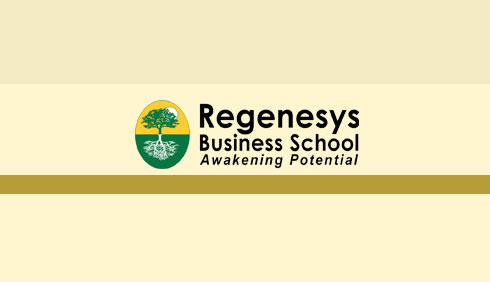When did corporate policy become an end in itself - a destructive end that defeats its own purposes? How do we get back to the essence of policy as means to the end of more optimally functioning organisations? This week's newsletter looks at these vitals as business sees the reemergence of policy as a powerful force in business.
Is policy dead?
The early Nineties saw the heyday of the corporate policy - a vibrant time during which new ideas were constantly being generated for how policies and procedures could be actively used as tools in business to streamline and standardise the way things got done. The optimisation of business functioning that this brought about was unprecedented.
It was the era of business process engineering, which looked at how policies could be used to effectively streamline the flow of business in an organisation to get the most out of people and processes.
As with most things, however, the policy trend became a runaway train that defeated its own ends. Enter the ‘dark world’ of business process re-engineering, which looked at how to get rid of such tired policies. An excess of policy had, apparently, sparked the end of an era.
These days, organisations often feel that they need to throw out the rulebook and go, almost blindly, into territory in which policy is very loosely defined. The subtle art of balanced policy-making has, it seems, all but died.
Already, it is being sorely missed as the pendulum swings ever further toward the opposite extreme. More and more businesses are so loath to rely on policy that they forsake virtually any kind of supporting structure. The missing link between execution and strategy that could be found in well-designed business models, linked to the relevant areas of business through well-defined policy, is simply ignored.
We are beginning to (re)discover that, without policy, organisations fall prey to the often devastating effects of the poor management of ever greater staff turnover. The recent overemphasis on agility has isolated institutional knowledge with a few top managers, disempowering the workforce and, effectively, holding organisations back. The policy-making process has been reduced to matters such as supplier service level agreements and not much more. The internal power that policies could have to enable staff to effectively meet business requirements is simply left untapped.
A business needs stable and predictable policies that allow for the linking of desired end results to financial requirements and people resources to grow - just as a public organisation does for optimal service delivery. In order to make the most out of what policy-making has to offer, we all need to unlearn what we think we know about it and revert back to basics.
The basic fact is that a policy is not meant to be an end in itself, but merely a means to the greater end of ensuring that an organisation remains well run. Businesses need to understand a policy as a set of choices so that they are able to put the necessary means to support, execute and maintain it.
Policy is what drives the definition of service and serves as a contract between management, the organisation and its other stakeholders, both internal and external. The definition needs to exist in order for the contract to become enforceable and tangible. It is of vital importance and has financial and cost implications, and so should be reviewed for efficacy from time to time.
Clear policies protect organisations from implosion - from falling apart from the inside out. When everybody knows where they stand, organisations are able to handle all issues proactively. But, in order for policy to serve this function properly, and not become an issue in itself, organisations need policy experts - a resource that is severely lacking in business today. To make matters worse, where policy experts do exist, they tend to be legal minds who operate behind closed doors - removed from the nuts and bolts of the business.
So the answer to the rhetorical question in the title of this piece is "no" - it has simply been asleep. The time has come to dust policy off and put it to its original valuable intended use as a standard that defines what can be achieved. When policy is linked to vision and action in the business, it becomes an effective tool to break down silos and systematise organisational improvement. Effective policies shape the behaviours and attitudes of staff and can create an effective framework to shape how people view the organisation.
The fact remains, however, that making policy effective is not an easy task. There are so many factors and variables to consider. There are also critical processes that need to be considered in ensuring that a policy is an effective tool. While you can learn so much more about this in the Regenesys course on policy development, you can use the following short guideline to see where your organisation ranks on a participation scale. Does your organisation have the following in place?
Contribution: Voluntary or other forms of input to predetermined programmes and projects are encouraged.
Information sharing: Stakeholders are informed about their rights, responsibilities and options.
Consultation: Stakeholders are given the opportunity to interact and provide feedback, and may express suggestions and concerns. However, outsiders usually make analysis and decisions, and stakeholders have no assurance that their input will be used.
Cooperation and consensus-building: Stakeholders negotiate positions and help determine priorities.
Decision-making: Stakeholders have a role in making decisions on policy, project design and implementation.
Partnership: Stakeholders work together as equals towards mutual goals.
Empowerment: Control over decision-making and resources is transferred to stakeholders.
By performing this simple analysis, you can evaluate the healthiness of your policy environment. If any less than three of the listed items are not in place, this may be an indication that your organisation is distressed or that your ad hoc approach to policy needs serious revision.
You need to do this evaluation every six months to ensure that your policy environment remains relevant and that you keep track of how external changes are affecting your organisation.
Never forget, however, that sometimes, the answer is not more policy - but less. Ironically, though, even this necessitates policy making.
Conclusion
As businesses grow and become more focused on their customers and innovation, the policy environment creates a language by which different parts of the organisation can agree on how things are done.
Too often, these processes get buried so deeply that it is tempting to think that there is no value in policy. Policy is a vibrant and vigorous tool that can be used to shape organisations and institutionalise desired behaviours and create links between strategy and execution.
- Regenesys
 Top Zimbabwe business executive arrested for fraud
Top Zimbabwe business executive arrested for fraud  South Africa is in serious trouble
South Africa is in serious trouble  US halts visa services for Zimbabwean nationals
US halts visa services for Zimbabwean nationals  ZSE and VFEX recover after weak 1st half
ZSE and VFEX recover after weak 1st half  Gold edges up as traders await guidance
Gold edges up as traders await guidance  Zimbabwe Agricultural Show 2025 kicks off
Zimbabwe Agricultural Show 2025 kicks off  Young Investment Professional (YIP) Graduate Programme 2019
Young Investment Professional (YIP) Graduate Programme 2019 










 Young Investment Professional (YIP) Graduate Programme 2019
Young Investment Professional (YIP) Graduate Programme 2019
Editor's Pick